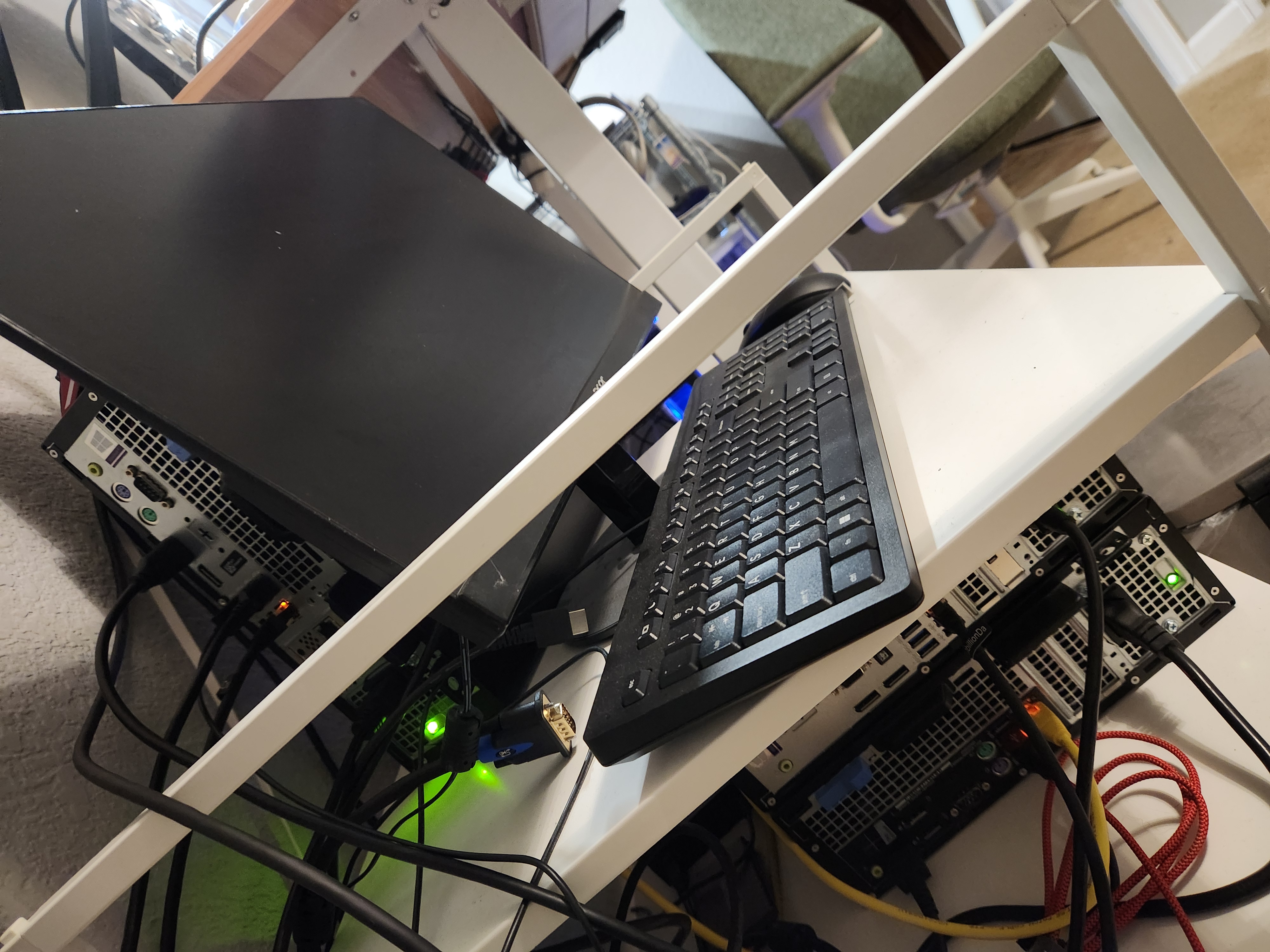Kubernetes Job is a very versatile tool that can be used to run any containerized task either once or on a recurring schedule. It can interact with other Kubernetes resources in the cluster just as any other pod can.
As an example, this post will walk through how to set up a Kubernetes Job to back up a PostgreSQL database on a recurring schedule. It involves
- Creating a Kubernetes Job
- Connecting to the database service
- Mounting volumes to the Job
- Running a container with the
pg_dump command
The job manifest
Below is the manifest used to create the Kubernetes Job, along with the PersistentVolume and PersistentVolumeClaim to store the database backups.
1
2
3
4
5
6
7
8
9
10
11
12
13
14
15
16
17
18
19
20
21
22
23
24
25
26
27
28
29
30
31
32
33
34
35
36
37
38
39
40
41
42
43
44
45
46
47
48
49
50
51
52
53
54
55
56
57
58
59
60
61
62
63
64
65
66
67
68
69
70
71
72
73
74
75
|
# test-db-bck-job.yaml
# persistent volume
apiVersion: v1
kind: PersistentVolume
metadata:
name: test-bck-nfs-pv
namespace: test
spec:
storageClassName: nfs-client
capacity:
storage: 1Gi
accessModes:
- ReadWriteMany
nfs:
path: /db_bck
server: 10.0.69.110
---
# persistent volume claim
apiVersion: v1
kind: PersistentVolumeClaim
metadata:
name: test-bck-nfs-pvc
namespace: test
spec:
storageClassName: nfs-client
accessModes:
- ReadWriteMany
resources:
requests:
storage: 1Gi
---
# the job itself
apiVersion: batch/v1
kind: CronJob
metadata:
name: pgdump-to-nfs-cron
namespace: test
spec:
timeZone: 'America/Denver'
schedule: "0 4 * * *"
jobTemplate:
spec:
template:
spec:
containers:
- name: pgdump
image: postgres:17
env:
- name: PGUSER
valueFrom:
secretKeyRef:
name: db-credentials
key: username
- name: PGPASSWORD
valueFrom:
secretKeyRef:
name: db-credentials
key: password
command: ["/bin/sh", "-c"]
args:
- |
pg_dump -v "postgresql://$PGUSER:$PGPASSWORD@test-db-service.test.svc.cluster.local:80/postgres" > /mnt/nfs/test$(date +%Y%m%d%H%M%S).sql
volumeMounts:
- name: nfs-volume
mountPath: /mnt/nfs
restartPolicy: Never
volumes:
- name: nfs-volume
persistentVolumeClaim:
claimName: test-bck-nfs-pvc
|
PersistentVolume and PersistentVolumeClaim
The first two blocks in the manifest make the PersistentVolumeClaim ready for the Job to use, which is where the database backups are stored.
The the following section of job manifest instructs the job to mount it.
1
2
3
4
5
6
7
8
9
|
volumeMounts:
- name: nfs-volume
mountPath: /mnt/nfs
command: ["/bin/sh", "-c"]
# ...
volumes:
- name: nfs-volume
persistentVolumeClaim:
claimName: test-bck-nfs-pvc
|
Container configuration
The container used in a cron job can be anything, but often times, it has to be configured for a specific task. In this example, I am using the postgres image which contains the pg_dump command to back up the database, and made the following tweaks.
- Set timezonoe to
America/Denver (my local timezone), and the schedule to run the job at 4:00 AM every day.
1
2
|
timeZone: 'America/Denver'
schedule: "0 4 * * *"
|
- Set the
PGUSER and PGPASSWORD environment variables to the database username and password.
1
2
3
4
5
6
7
8
9
10
11
|
env:
- name: PGUSER
valueFrom:
secretKeyRef:
name: db-credentials
key: username
- name: PGPASSWORD
valueFrom:
secretKeyRef:
name: db-credentials
key: password
|
- Define the command to run in the container.
1
2
3
4
|
command: ["/bin/sh", "-c"]
args:
- |
pg_dump -v "postgresql://$PGUSER:$PGPASSWORD@test-db-service.test.svc.cluster.local:80/postgres" > /mnt/nfs/test$(date +%Y%m%d%H%M%S).sql
|
Apply the manifest
1
|
kubectl apply -f test-db-bck-job.yaml
|
Check if the job is created successfully:
1
|
kubectl get cronjob --namespace test
|
Testing the job
Theoretically, the job is now set up, and will run at 4:00 AM every day. We can wait until the next time it runs to find out if it works, but I always like to test my jobs manually first.
1
|
kubectl create job --from=cronjob/pgdump-to-nfs-cron manual-job --namespace test
|
The above command creates a job from the cron job, and runs it once, immediately. That means we can check the results right away.
1
|
kubectl logs manual-job --namespace test
|
Take a moment to see if everything looks right, and if so, the job can be left to run on its own.
Optional: Clean up
1
|
kubectl delete cronjob manual-job --namespace test
|
